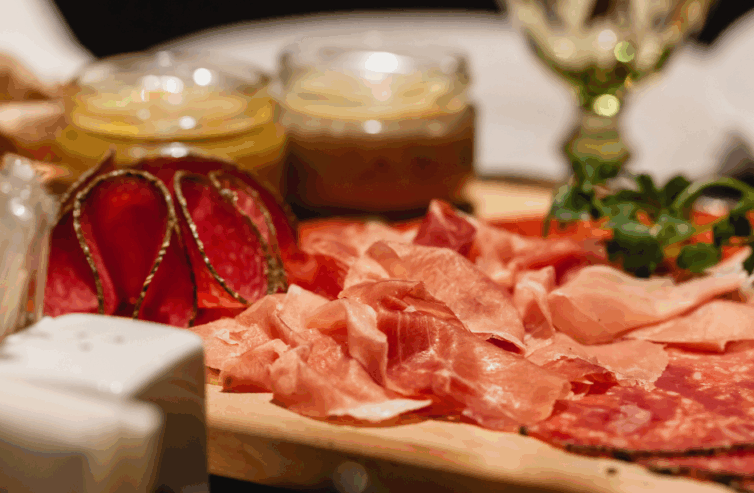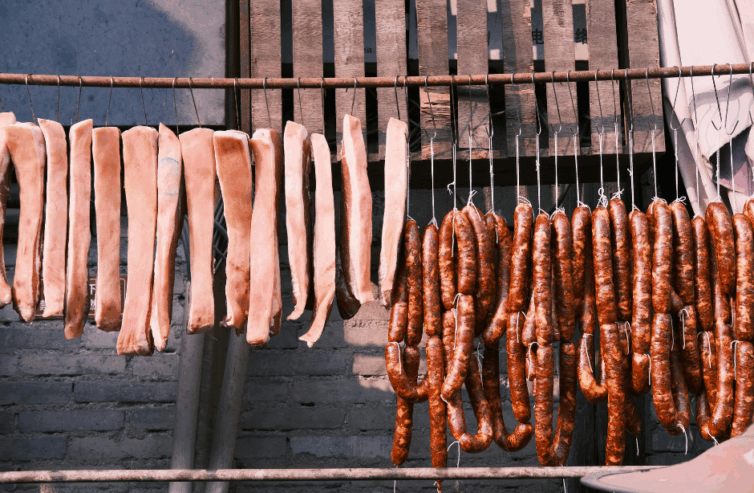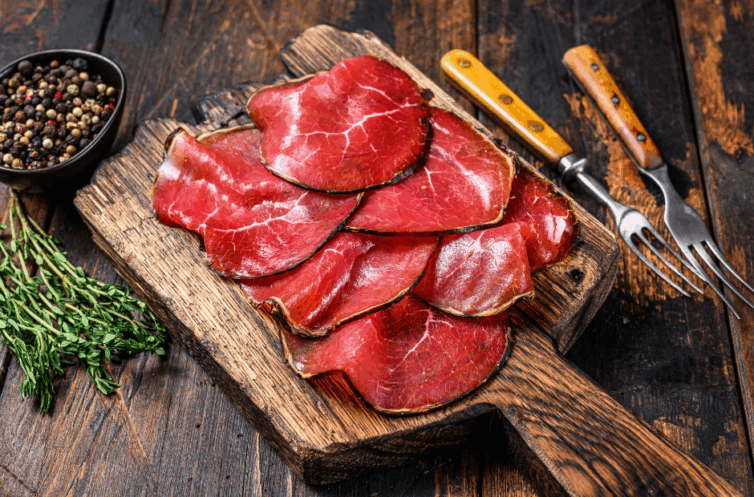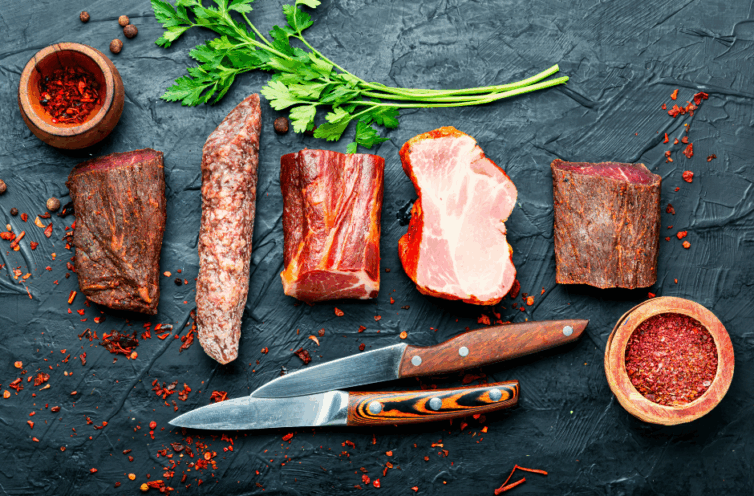What Is Dry Curing and Why Do Chefs Love It?
If you’ve ever tasted an exceptional piece of prosciutto, pancetta or air-dried beef, chances are you’ve encountered dry curing. But what is dry curing, exactly, and why is it a method chefs across the UK and beyond continue to swear by?
Dry curing is one of the oldest and most revered preservation techniques in the world of meat preparation. It involves rubbing whole cuts of meat with a mixture of salt, sugar and often spices, then allowing them to rest in a controlled environment over a period of days, weeks, or even months. No brine, no injections – just time, salt, and skill.

A Deeper Look Into the Dry Curing Process
Dry curing is both a science and a craft. It begins with the careful selection and preparation of high-quality meat, typically cuts like pork belly, loin, or beef topside. These cuts are coated by hand with a blend of salt and often other seasonings, such as sugar, cracked pepper, bay leaf, or garlic. This curing mix is designed not only to preserve the meat but also to enhance its natural flavour.
Once cured, the meat is placed in a controlled environment where temperature, airflow and humidity are managed precisely. Over the course of days, weeks or even months, the salt draws moisture from the meat, slowly reducing its water content and preventing bacterial growth. During this time, natural enzymes begin to break down muscle fibres and fat, which deepens the meat’s flavour and creates a firmer, more appealing texture. This gradual transformation results in meats that are robust, savoury, and satisfying to work with in a professional kitchen.
What Makes Dry Curing Different from Other Methods?
Dry curing stands apart from other preservation methods in several ways. Wet curing, for example, involves submerging meat in a liquid solution, often with added sugar, nitrates, and flavourings. While effective and widely used in industrial processing, wet curing can leave the meat waterlogged, with a diluted taste and softer texture. Injection curing, a faster, commercial method, uses needles to introduce curing solution directly into the muscle. This can speed up processing times significantly but sacrifices the flavour development that only time can bring.
In contrast, dry curing is a slower, more deliberate method. Without added water or artificial fillers, the final product is more concentrated in both flavour and density. It’s a process that doesn’t cut corners, which is exactly why chefs appreciate it – particularly when quality is non-negotiable.

Why Do Chefs Love Dry Cured Meats?
Chefs choose dry-cured meats because they offer an intensity of flavour and a consistency that can’t be matched by faster methods. The slow removal of moisture amplifies the natural umami notes of the meat, and the addition of carefully selected spices enhances depth and complexity. The resulting flavour isn’t just salty or savoury – it’s layered, rich and distinctive.
Texture plays a key role too. Dry-cured meats are noticeably firmer and denser, offering a more satisfying bite whether served on a charcuterie board or incorporated into a warm dish. They cook differently as well, often crisping beautifully without releasing excess liquid. This not only improves taste but also helps with presentation.
There’s also a deeper value in the tradition behind dry curing. It reflects a return to craftsmanship and respect for the product. Many chefs take pride in using ingredients made the traditional way, and dry-cured meats allow them to tell a story about provenance, patience, and proper technique.

Common Examples of Dry Cured Meats
Dry curing is used to produce some of the most sought-after meats in professional kitchens. Bacon made from pork belly or loin is a classic example; when dry cured, it develops a fuller flavour and cooks to a perfect crisp without excess shrinkage. Pancetta, often used in Italian cooking, adds richness and depth to stews, pastas and risottos.
Bresaola, a lean beef cut that’s dry cured and air-dried, is popular in fine dining for its subtle, savoury profile. Prosciutto and coppa are also traditionally dry cured, offering distinctive marbling and flavour after months of careful ageing. These meats showcase the depth and variety that dry curing can bring to a menu.
Getting the Best Out of Dry Cured Meats
Working with dry-cured meats is as much about respect for the product as it is about technique. Proper storage is important – these meats should be kept cool and wrapped well to retain their structure and prevent them from drying out further. Many chefs allow dry-cured products to come to room temperature before serving, which helps to bring out their aroma and texture.
Slicing is another key consideration. Paper-thin slices are ideal for meats like bresaola and prosciutto, as this allows the fat to soften slightly and release more flavour. On the other hand, dry-cured bacon may benefit from slightly thicker cuts for maximum crisp and chew.
Pairing is part of the craft too. Rich, salty meats often work beautifully alongside acidic or sweet elements – such as pickled vegetables, mustard, or a sharp apple chutney. These additions balance the salt content and enhance the overall dish, making dry-cured products even more versatile in a professional kitchen.

The Enduring Value of Dry Curing
So, what is dry curing? It’s not just a preservation method – it’s a commitment to quality, patience, and time-honoured skill. It delivers depth of flavour, a firmer texture, and a sense of tradition that many modern methods simply can’t replicate. For chefs and caterers, using dry-cured meats can add something truly special to a dish – whether it’s a centrepiece or a carefully chosen ingredient.
Please note that while this blog discusses the traditional process of dry curing, Burt’s Catering Butchers do not currently produce or supply dry-cured meats. For information about our full product range, including fresh and aged cuts, please contact our team directly.
If you’re looking for consistently high-quality meat for your commercial kitchen, get in touch with the team at Burt’s Catering Butchers. We work all across the south east of England supplying quality butchers meat to hotels, restaurants, cafes, brasseries and pubs, as well as event caterers, schools and any other business who needs fresh meat from a catering butcher.
We’re always happy to discuss your requirements, offer expert advice, and ensure you have the right cuts and products to suit your menu.




